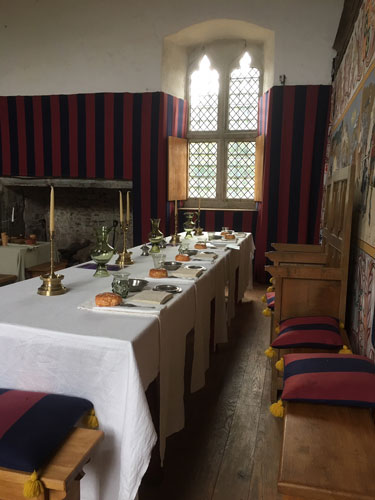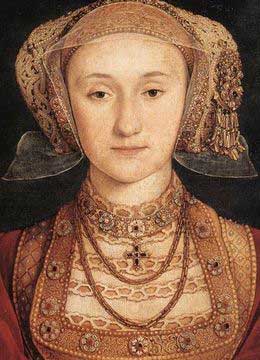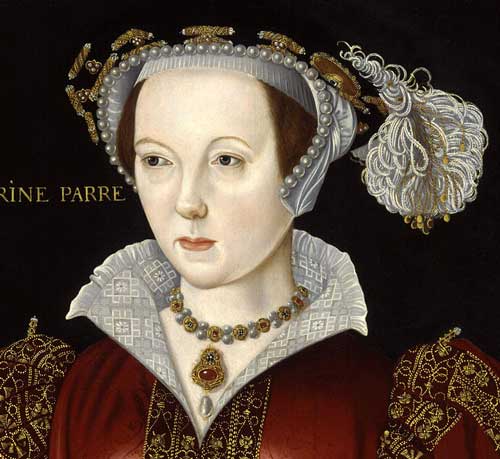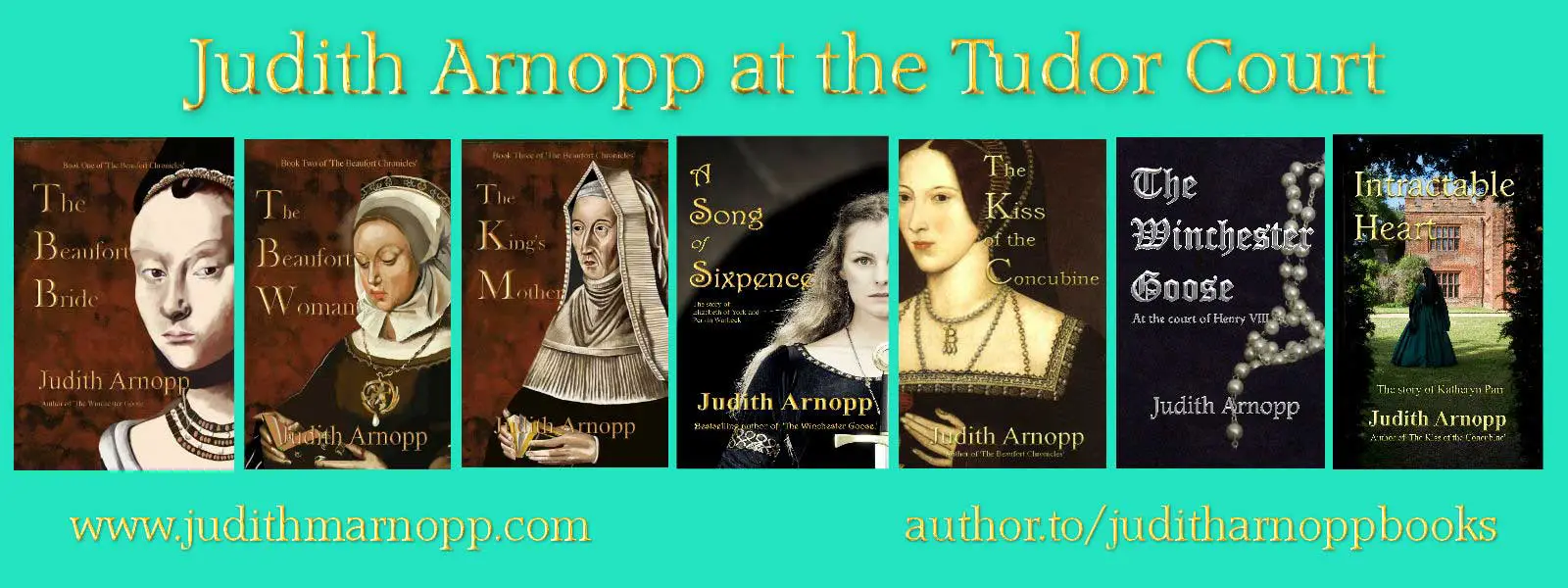December 18
Today we have an article from historical fiction author Judith Arnopp. Judith looks at a different side to Christmas. Take it away...

We tend to imagine medieval and Tudor Christmases as occasions of celebration and feasting; a hall bedecked with greenery, a burning yule log in the hearth, a boar’s head on the table. Wine is flowing, minstrels are playing and misrule is king. Then a giant green knight on a fiery steed breaks through the doors and demands … oh, hang on, that is just a story.
In fact, Christmases throughout the Tudor period were peppered with personal sorrow for the monarchs. In December 1495, a few days before Christmas, Jasper Tudor, uncle and prime supporter of Henry VII, died in his bed at Thornbury Castle. He was a great loss to Henry and Margaret Beaufort and his passing must have cast a shadow on their celebrations.
A couple of years later on Christmas Eve while the royal family was in residence, Sheen Palace was ravaged by fire but it didn’t stop there. With increasing regularity, the festive season was not a time of joy for the Tudors

It wasn’t all bad, of course. The first few years of Henry VIII’s reign saw plenty of joyous feasts and masques. One such pageant featured Robin Hood and his Merry Men who, to everyone’s studied surprise, turned out to be none other than the king himself and his favourite courtiers. Disguise was a favourite trick of Henry’s, one that he repeated often and, I would imagine to the court, ad nauseam.
The following Christmases passed much as one would expect but after an outbreak of sweating sickness in 1517 Henry, ever fearful of contagion, kept a quiet court, watching a masque of Troilus and Creseyde at Eltham Palace.
1526 was a better year. The ten-year-old Princess Mary danced at court, an event that must have proved a poignant memory for Mary for by the following Christmas her life had changed. Her mother had been replaced in Henry’s affections by Anne Boleyn and the king’s ‘secret matter’ was under way.

By 1531 Queen Catherine had been banished from court and the seasonal festivities were joyless. By New Year of 1532 Anne had publicly taken Catherine’s place, holding court as if she were indeed the queen. This year the king returned Queen Catherine’s gifts, saying that since he was not her husband it was inappropriate for her to send him gifts.
Just two years later, despite now being queen, Christmas must have been difficult for Anne Boleyn. She had recently miscarried her second child, lost her small dog when he fell from a window, and quarrelled with her uncle, the duke of Norfolk. It was the beginning of the end for Anne, having failed to provide a male heir she had lost Henry’s love and was now an irritation to the king; he couldn’t wait to be rid of her. Cromwell at his master’s behest made sure this was so, and in May 1536 Anne was beheaded.
The winter of 1536-7 was a cold one, the country was ice-locked and the roads impassable but the Thames was frozen solid and the king undeterred. The new queen, Jane Seymour, entreated the king to invite Princess Mary for the Christmas celebration and on the twenty second of December the royal party travelled on the frozen river from Westminster to Greenwich.
There was another guest at Christmas this year. In response to the dissolution of the monasteries the north of the country was in rebellion. The rebels far outnumbered the king’s army so Henry, pretending to consider their demands, invited the leader Robert Aske to join the court celebration. He bestowed a velvet coat on Aske and treated him royally, but when trouble broke out afresh in the north, Aske was headed for trouble. Although he offered to help the king quell the rising, Cromwell, who was the prime target of the rebels, went out of his way to implicate him in the latest rebellion. In July 1537, after a short and unjust trial, Aske was condemned to die a traitor’s death. He was hung alive in chains over the walls of Clifford’s Tower in York as an example of what happens to those who act against the wishes of the king.

As we all know, Queen Jane died in October 1537 shortly after giving Henry his longed-for heir. Henry spent the Christmas of 1537 grieving quietly at Greenwich. But by Christmas 1540, he was recovered enough to be persuaded to take another wife, and a few days after the celebrations, a new bride landed at Dover.
After a seventeen hour journey, Anne of Cleves arrived in England in the midst of a bitter storm. She travelled across country for as long as she could but in the end the weather forced her to take refuge at Rochester Castle. Henry, impatient to meet his new bride whom he had only seen in the now famous Holbein portrait, set off to meet her. Expecting a woman of radiant beauty, he found something quite different and although he treated her with grace, after leaving the meeting, the fastidious king fell into a great rage, claiming he had never been ‘so much dismayed in his life as to see a lady so far unlike what had been represented.’ To Cromwell’s dismay, the marriage was annulled and by July, Anne of Cleves had been replaced by the very young, very beautiful and very unwise, Katherine Howard, and Cromwell was dead.
Henry and Katherine had just one Christmas together. They spent it at Hampton Court where he showered jewels and furs upon her. The king’s eldest daughter, Mary, and his shunned wife, Anne of Cleves, joined them for the New Year. Anne gave the king a pair of horses in expensive trappings. Henry gave Katherine two lap dogs, one of which she impulsively passed on to Anne.

By all accounts it was a joyous time, the king had finally found happiness but, by Christmas 1541 Katherine had fallen and was under house arrest at Syon Abbey accused of treason and adultery. Those accused with her, Tomas Culpepper and Francis Dereham met their death on the 10th of December 1541 – Culpepper was executed as befit his station but Dereham was hung, drawn and quartered. For Katherine at Syon there were no presents, and no festive joy that year … or ever again.
The king spent a miserable Christmas, sunk in depression at having lost not only his wife but his friend and servant, Thomas Culpepper. Showing no interest in the celebrations, the ageing king neither sought, nor found any solace. It was after Katherine’s demise that he began to gain weight and it soon became clear that his vigour was gone; he was old. The betrayal and execution of Katherine in February 1542 was the beginning of the end for Henry but in July 1543 he gave marriage one more shot and was to his sixth and final wife, Katherine Parr.
Despite the war with Scotland, Henry and Katherine spent first Christmas at Hampton court. Eager to reunite the king with his all children, Katherine Parr provided the royal children with a dependable mother figure. In 1545 Princess Elizabeth presented her with a translation of The Mirror of the Sinful Soul which she dedicated to Katherine, ‘the most noble and virtuous’ and signed it from ‘her humble daughter, wisheth perpetual felicity and everlasting joy.’
However, despite this interlude of royal contentment, the king’s health was fading, and he grown so weak he was often forced to resort to a wheeled chair. In 1546, on Christmas Eve, he addressed parliament, using words so touching that his listeners were reduced to tears. Shortly after what was to be Henry’s last public speech the king became so ill that Christmas was cancelled. By 27th of December the physicians admitted they could do no more and on the 30th of December the king made his will.
But then he seemed to rally again, and he and Katherine travelled to London on the 3rd of January but by 28th of that month the king was dead. The prince who had ascended the throne with so much potential was gone; the vibrant young king, a lover of masque and cunning disguise had been usurped, and transformed into a failed and embittered tyrant.
Judith Arnopp is the author of eleven historical novels. She works mainly in the late medieval and Tudor period. You can find out more about her from HERE.
Her work includes:
- Sisters of Arden (out now)
- The Beaufort Chronicles: the life of Lady Margaret Beaufort (three book series)
- A Song of Sixpence: the story of Elizabeth of York
- The Kiss of the Concubine: a story of Anne Boleyn
- The Winchester Goose: at the court of Henry VIII
- Intractable Heart: the life of Katherine Parr
- The Song of Heledd
- The Forest Dwellers
- Peaceweaver
